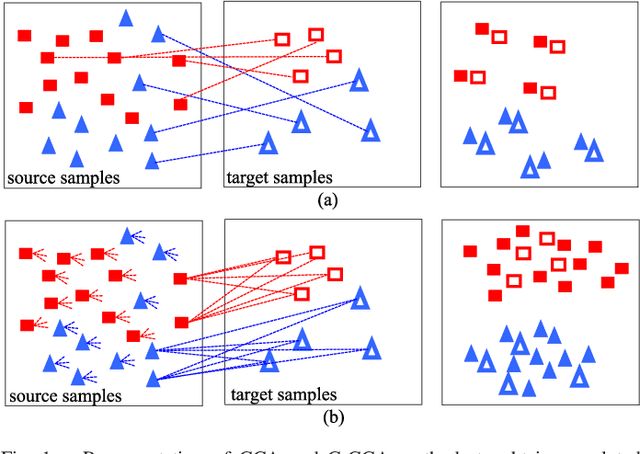Cross-Domain Collaborative Learning via Cluster Canonical Correlation Analysis and Random Walker for Hyperspectral Image Classification
Paper and Code
Oct 30, 2018



This paper introduces a novel heterogenous domain adaptation (HDA) method for hyperspectral image classification with a limited amount of labeled samples in both domains. The method is achieved in the way of cross-domain collaborative learning (CDCL), which is addressed via cluster canonical correlation analysis (C-CCA) and random walker (RW) algorithms. To be specific, the proposed CDCL method is an iterative process of three main stages, i.e. twice of RW-based pseudolabeling and cross domain learning via C-CCA. Firstly, given the initially labeled target samples as training set ($\mathbf{TS}$), the RW-based pseudolabeling is employed to update $\mathbf{TS}$ and extract target clusters ($\mathbf{TCs}$) by fusing the segmentation results obtained by RW and extended RW (ERW) classifiers. Secondly, cross domain learning via C-CCA is applied using labeled source samples and $\mathbf{TCs}$. The unlabeled target samples are then classified with the estimated probability maps using the model trained in the projected correlation subspace. Thirdly, both $\mathbf{TS}$ and estimated probability maps are used for updating $\mathbf{TS}$ again via RW-based pseudolabeling. When the iterative process finishes, the result obtained by the ERW classifier using the final $\mathbf{TS}$ and estimated probability maps is regarded as the final classification map. Experimental results on four real HSIs demonstrate that the proposed method can achieve better performance compared with the state-of-the-art HDA and ERW methods.
 Add to Chrome
Add to Chrome Add to Firefox
Add to Firefox Add to Edge
Add to Edge